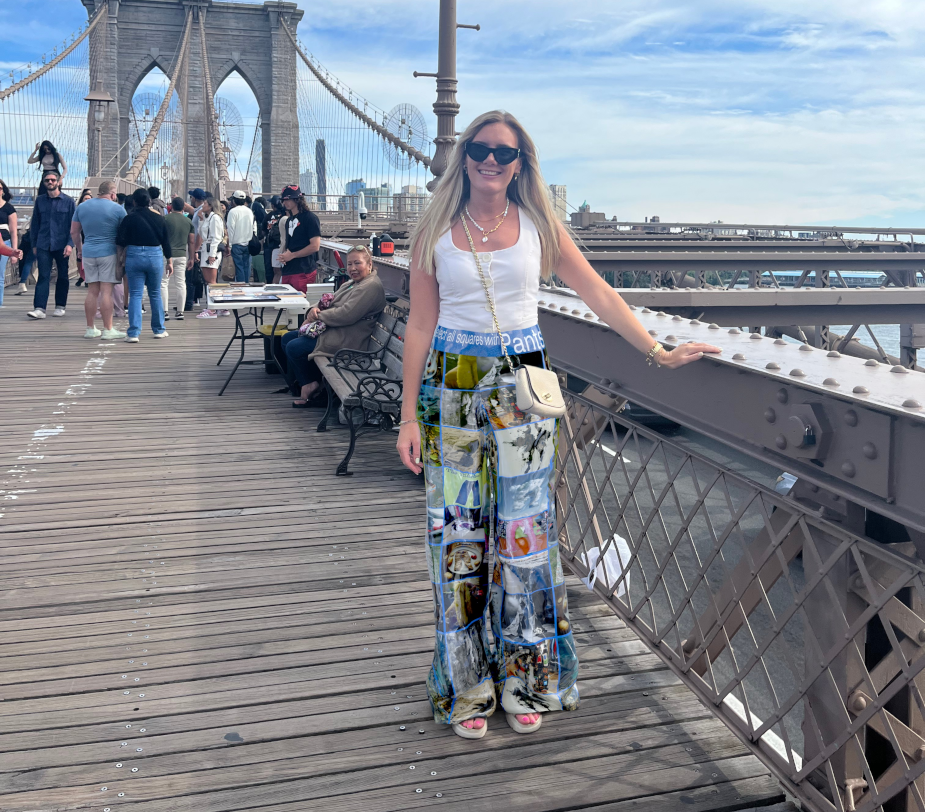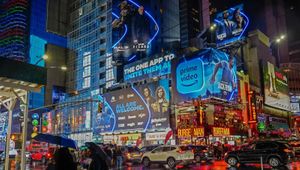
The Emergence of a New Luxury Paradigm

When I was growing up, there were two markers of a luxurious lifestyle: a von dutch cap and a juicy couture tracksuit. Yes, I’m a proud ‘90s baby. Today, I can have meals prepared and delivered to my home, skincare formulated to my personal physiology and a private car ready to whisk me off at a moment's notice. My parents can’t believe these services exist, let alone have become the norm for millennials like me. Whilst Juicy and Von Dutch do appear to be making some sort of disconcerting comeback, the shift in generational expectation of a ‘luxury lifestyle’ is seismic.
For boomers, gen x and older millennials, traditional drivers of luxury like status and exclusivity helped fulfil a psychological longing for a sense of accomplishment. Whereby the pink juicy couture two-piece becomes a symbol of achievement and success. Zoomers and gen-Alpha’s world view, heavily shaped by technological immersement, manifests with a new set of expectations of what luxury means. This piece examines these expectations, underlying motivations and how luxury brands can evolve strategically to win them over.

Above: Emily wearing Digital Fashion (the trousers are by DRAUP and are called CAPTHCA PANTS, they only exist online)
The Luxury Value Proposition
Fine wines, fashion, cars; luxury goods have intrinsic and functional value through the sheer brilliance of creativity, design ingenuity and the scarcity and quality of the materials used.
While these products are physical manifestations of artistic expression, they also encapsulate the story of meticulous craftsmanship. From Loewe x Paula’s Ibiza fruit bags with over 20,000 hand-appliquéd beads, to Rolex watches that require over 12 months to produce, the artisans' precision and skill enhances the allure and prestige of these items.
We only have to cast our mind back to the Maison Margiela 2024 Artisanal Collection to see how strongly this idea still resonates today. John Galliano, a totally flawed and complicated man, accomplished a moment of monoculture cut though where he is heralded for his genius and celebrated for his embrace of the female form.
His ingenuity is the product. The luxury item is simply there to allow us mere mortals a little taste of that genius. To experience something truly rare and exceptional.
To feel a proximity to specialness that in turn makes us feel seen.
Gen Z and Gen Alpha at the Forefront
For the next generation of luxury buyers, being seen isn’t just about the physical world but also their digital personal expression.
These audiences are shaped by their digital upbringing. The result of the algorithmic echo chamber, and the rise of ideological identity means that for gen Z in particular, they hold strong world views and expect brands to do the same. They are less preoccupied with status and exclusivity and instead see access, authenticity and greater self expression as meaningful drivers.
Gen Z and gen Alpha’s constant connectivity exposes them to luxury lifestyles earlier, with gen Alpha beginning luxury shopping at 15, compared to gen Z’s at 18.
By 2030, the luxury market is predicted to expand to 500m customers, driven in part by the ballooning speeding power of these audiences. Whilst the wealthiest 2% of the planet (who skew 45+) accounted for 40% of luxury spending last year, millennials through to gen alpha accounted for all growth in the sector. All of it.
Some traditionalists may scoff at the idea of targeting lower frequency luxury consumers, but it’s worth understanding that these emerging luxury brand shoppers account for a whopping 50% of the luxury brand market.
Nurturing these audiences, understanding and segmenting them by needs and adopting nuanced strategies will ensure the staying power of next generation luxury.
Strategies for Engaging ‘Modern Luxury Audiences’
To engage high-value aspirational audiences, luxury brands must move beyond traditional marketing tactics. While owning a physical Chanel handbag once symbolised achievement, 60% of gen Z now believe their online presence is more significant than their physical lives. Therefore, digital identity and self-expression have become paramount and the need for digital luxury goods continues to grow.
Luxury brands should foster genuine partnerships with consumers, creating immersive experiences across innovative platforms such as secondary markets, web-3, and subscriptions. These approaches not only enhance brand insights but also lead to a deeper understanding of consumer needs.
Secondary markets will become increasingly important and should be a key part of customer strategy.
With TikTok Shop now allowing listings up to £4000 through partnering with 5 luxury resellers- Luxe Collective, Sellier Knightsbridge, Sign of the Times, Hardly Ever Worn It and Break Archive- luxury brands will be pushed out of important conversation around sustainability and circularity.
Rather than marketing a singular brand narrative, luxury brands should be creating accessible pathways for that individual to meaningfully participate in that brand story. Creating a multifaceted brand web with different sticking points: entertainment, experiences, gateway products, with one objective in mind: to nurture and learn more about the individual’s preferences.
The Emergence of a New Luxury Paradigm
Here are four key observations that can help focus strategic shifts:
1) Code as Couture
Craftsmanship in the digital age; coding, 3D modelling, and prompt engineering, is now as valuable as traditional needlework and pattern making. With the digital fashion industry already valued at $40 billion annually, embracing digital first design offers new growth opportunities. Louis Vuitton just dropped their third phygital NFT as part of their VIA project, whereby NTF holders can buy the jacket via a token-gated website, and will receive the physical version in late 2024. The cost, a cool €7,900.
2) Phygital Provenance and Ownership
Leveraging digital technology to track an item's provenance enhances its personal and cultural value. Blockchain technology can solidify this by providing an immutable record of ownership and history. Combine this with the growing demand for vintage or ‘achive-core’ pieces and you have the ultimate symbol of ownership, for however long you want to hold it. Think about how Kim Kardashian’s choice to wear the iconic ‘Marilyn Monroe’ dress to the Met Gala, impacted its value and cultural clout.
3) World Building and Expansion
Luxury brands must transcend traditional marketing channels, engaging consumers in unexpected ways. By creating physical and digital third spaces, they can foster communities and establish new brand touchpoints expanding discoverability. Think Anya Hindmarch’s ‘Village’ concept, or Hilton Honours programme partnership with Paris Hilton’s Roblox ‘Slivingworld.
4) Quality Entertainment is a Luxury
The capacity for storytelling is crucial for luxury brands entering the entertainment space. LVMH's entertainment arm, 22 Montaigne, and Harrods' partnership with xydrobe 4D virtual cinema exemplify how luxury brands are embracing this new frontier.
Creativity on steroids
The blurring of web-2 and web-3 can be an interesting starting point for integration of digital and traditional craftsmanship, allowing brands to expand the creative canvas and engage with emerging audiences through nuanced, multi-channel approaches. Through creating a tapestry of touchpoints, luxury brands can cultivate lasting emotional connections with consumers, and be more deeply connected into culture.
Now more than ever, there needs to be a shift from thinking tactically about quick wins, to investing in that future. The reality is that an audacious and expanded creative vision will take time to execute, and new craft isn’t developed overnight. It requires a clear strategic vision, and a culture of bold brand world building.
There is an explosion of new age creative and design talent, with less barriers to enter than ever before. These emerging artists are creating brands that redefine how we create, access and authenticate our image. If luxury brands- whose value is defined by their creative IP- don’t embrace growth audiences needs, they risk being left behind as new luxury audience demand matures.










